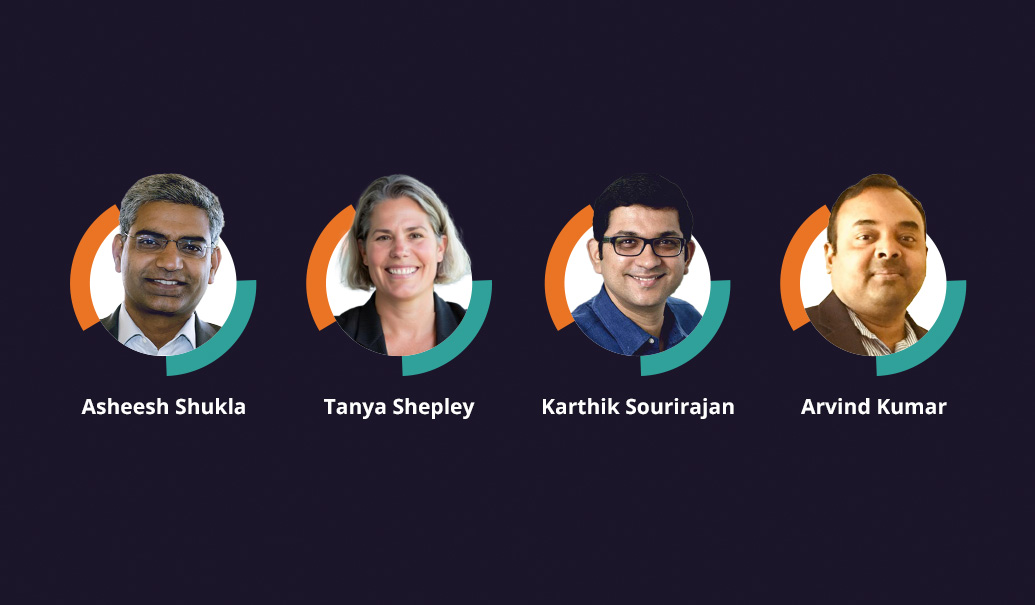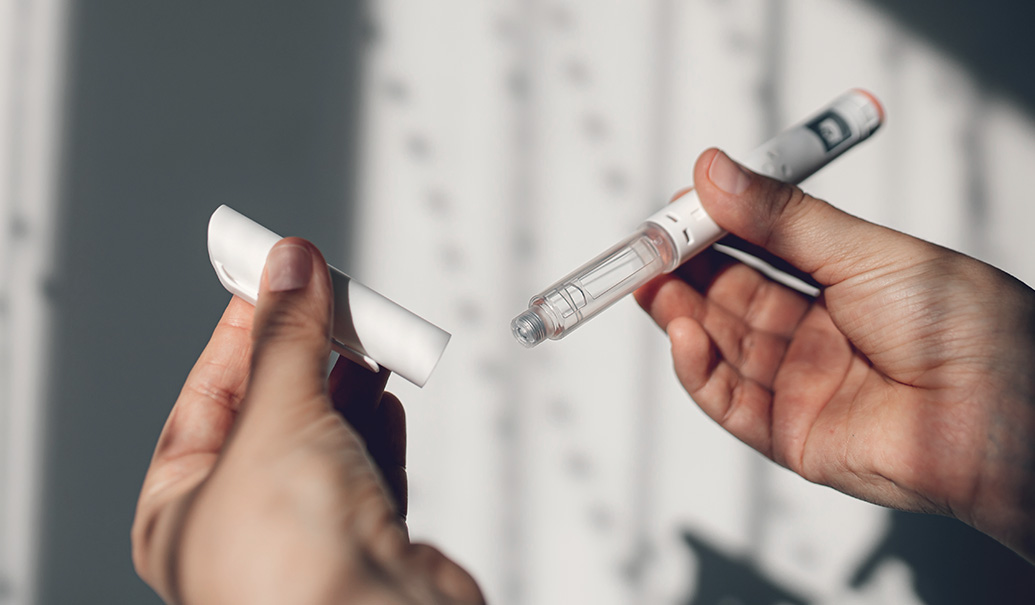The shift toward digital models of care has accelerated in recent years, fueled by evolving customer expectations. With new access and reimbursement pathways emerging across Europe for innovative solutions, we are seeing a growing number of digital therapies enter the market. U.K.-based Ampersand Health is pioneering the development of personalized digital therapeutics for people with long-term conditions such as inflammatory bowel disease, arthritis and dermatitis. Nader Alaghband, CEO and co-founder of Ampersand, discusses the potential of digital therapies to improve people’s lives, the value these therapies drive to the health system and ways to address adoption barriers.
Tra-My Nguyen: In the last few years we’ve seen a growth in the digital health market, with Ampersand being one the pioneers in the U.K. Can you give a brief background on your company and vison?
Nader Alaghband: Ampersand helps clinicians and patients better manage chronic diseases. Inflammatory conditions like IBD or arthritis are characterized by cycles of relapse and remission that are unpredictable. In contrast to the volatile nature of the patient experience, healthcare is typically delivered in a linear and episodic way: After diagnosis and initial treatment, patients are followed up every x months for the rest of their lives, regardless of whether they are in an up period or down period. The problem is that clinicians do not have the right data about patients in between appointments to know who is in an up period and who is in a down period in order to focus their care. Ampersand has developed a remote monitoring platform to address this, enabling a virtual care pathway as well as patient-initiated follow-up appointments when needed. This, in turn, helps hospitals focus their scarce resources on patients that need them the most, as well as reduces unplanned Accident & Emergency (A&E) visits by up to 89%. In addition to the remote monitoring platform, we have a series of patient-facing digital therapeutics that help patients manage secondary symptoms such as pain, fatigue, sleeplessness and anxiety that are often overlooked, but significantly impact patients’ quality of life. Digital therapies help patients self-manage these aspects of their condition better, and in doing that, also provide more of an incentive to adopt the remote monitoring component.
TN: I love the combined remote monitoring and digital therapy working in conjunction to bring value to both clinicians and patients. The COVID-19 pandemic has increased the need for more efficient care delivery and better self-management. How has this affected your launch in the U.K., and what are the key drivers of adoption for Ampersand’s solutions?
NA: The pandemic has thrown both remote monitoring and self-management into the spotlight. We no longer have to persuade people about the value of going virtual—people understand why it’s needed. Since the pandemic, hospitals have been driven by a will to keep patients safe, limiting the number of patients coming into the hospital where possible. This was the initial adoption driver to move to the virtual pathway. However, realizing that this pathway is more efficient and preferred by patients and clinicians has been the driver of retention. Referral-to-treatment times are a statutory responsibility for NHS trusts, and our platform helps hospitals process the referral backlog more efficiently by enabling the care team to review patients virtually and triage appropriately. Some patients on the waiting list may need to be seen urgently, while others can be referred out.
“The pandemic has thrown both remote monitoring and self-management into the spotlight. We no longer have to persuade people about the value of going virtual.”
- Nader Alaghband, Ampersand
TN: Improving the efficiency and effectiveness of care are key adoption drivers at the health system level. How does this differ for the individual physician?
NA: The story we often see is that a handful of physicians who are really passionate about digital will drive change across their departments. When these physicians start hearing that patients really like it and do not want to go back to the old way, this generates credibility in front of their more skeptical peers. And that drives change organically over time.
TN: We’ve spoken about drivers of adoption for Ampersand’s solutions. What are some adoption barriers you’ve come across?
NA: Undoubtably, time poverty is by far the number one objection. Healthcare professionals, in particular nurses, are stretched, so having another activity added to their workload can be seen (initially) as extra burden. The second barrier is the fragmentation of datasets. Every time you bring in a platform, unless it’s properly integrated, you’re introducing another dataset. Among pharma companies, we also hear high concern about low patient uptake and engagement. For Ampersand, this is quite an easy objection to handle, as our data shows quite good patient engagement. With healthcare professionals, we see less of a concern. They will remark that roughly 30% of their patients won’t adopt it. But for the remaining patients, clinicians seem to be confident that they can get patients to use it by asking them to try it. Having the clinician in the loop helps keep patients motivated and accountable. That’s a big part of why we’re confident our model works better.
TN: Across the industry, sustained patient engagement with digital health solutions continue to be a challenge. How has Ampersand tackled engagement?
NA: It’s all about value exchange and accountability. It’s got to be worth it for people using it. We ensure high value exchange by offering personalized digital therapies that help patients better manage important aspects of their condition. We also have a series of out-of-app programs through the Ampersand Health Hub, creating community for patients and keeping people engaged through regular webinars and community meetups. The remote monitoring proposition also gives patients peace of mind. Our patient population really values knowing that their doctor can see when they’re well and unwell.
On the flipside of the coin, because our model keeps clinicians in the loop with remote monitoring, the clinician helps keep patients accountable through follow-ups and review of data.
TN: Most companies we see have either a remote monitoring platform or digital therapeutic—it’s really interesting that Ampersand has leveraged both to ensure high value exchange for clinicians and patients. How else have you addressed the other adoption barriers we discussed?
NA: To reduce burden on nursing staff, we hold a primary relationship with the patient. We take ownership of the onboarding process and are the first point-of-call for patient inquiries and support. Obviously if the query is clinical, we refer the patient back to their care team.
But the real driver in overcoming adoption barriers is delivering value. From a clinician’s perspective, this means delivering a unique dataset, unique insights and reporting as a service. It’s about proving that it’s brilliant and you can’t live without it, rather than how we can make it less burdensome.
TN: We’ve talked about strategies that have been successful. Can you share any lessons learned from mistakes made along the journey?
NA: I think the biggest mistake we made was underestimating the extent of organizational change required to get the most out of the kind of technologies we’re discussing. It’s important to make it clear to customers that implementation of technology alone is not the solution to the problem, but only support for the solution. The solution is a different working practice, a different philosophy, a different approach to doing business. The platform is the foundation stone enabling that.
Underestimating the extent of organizational change leads to not having sufficient buy-in from digital transformation or innovation teams, or not having sufficient project management support. A few influential physicians adopting your solution will not translate to uniform results across the department. You need organizational commitment from the institution to drive change management.
TN: Partnerships, such as with patient associations or the pharmaceutical industry, are an important element of many digital health companies’ strategy. What role do partnerships play for Ampersand?
NA: In the beginning, we co-created our solutions with patients, doctors and nurses. Throughout the product development journey, we continue to spend a lot of time referencing our standing groups of patients and clinicians. We also partner with patient associations that represent the voice of the patient.
In the U.K., pharmaceutical companies play an important role in enabling investments in better care. The data-rich environment we create lends itself to quicker diagnosis and better access to treatments. Ultimately, the collaboration helps to reduce the referral backlog and shorten time to the right treatment for patients.
TN: Looking forward, what are your plans for Ampersand’s future growth? How do you see the digital health market landscape evolve with digital native companies like Ampersand and larger pharma and medtech organizations?
NA: From an R&D perspective, we have an exciting roadmap of digital medicines spanning the breadth of inflammatory and immune-mediated conditions. We’re exploring digital biomarkers, flare prediction models and accelerated diagnosis and, of course, exploring a partnered approach to expansion in adjacencies and new markets, including the U.S. and Germany. We’re lucky to partner with some of the biggest pharmaceutical companies in the world. They can see that effective digital and data strategies are integral to their long-term differentiation and value, and there’s a great opportunity to accelerate our R&D and our market access plans alongside them over the coming year or two.
Add insights to your inbox
We’ll send you content you’ll want to read – and put to use.














